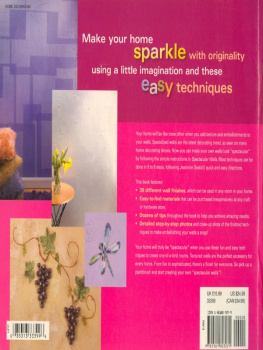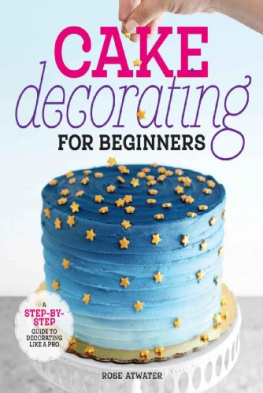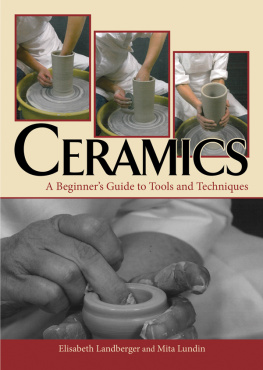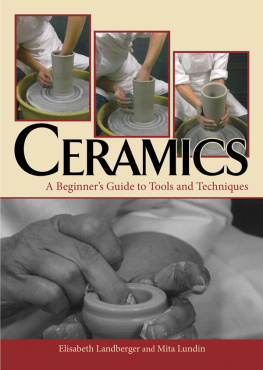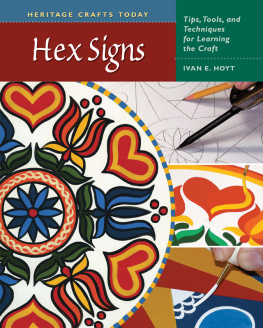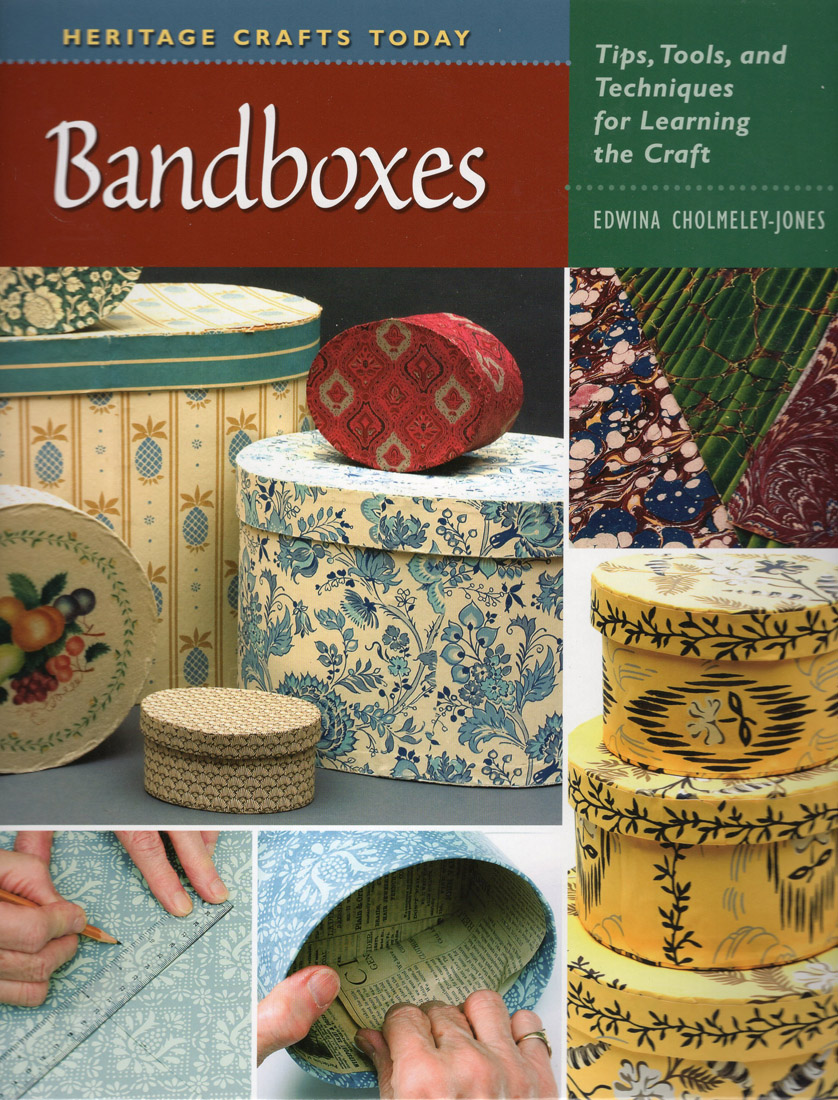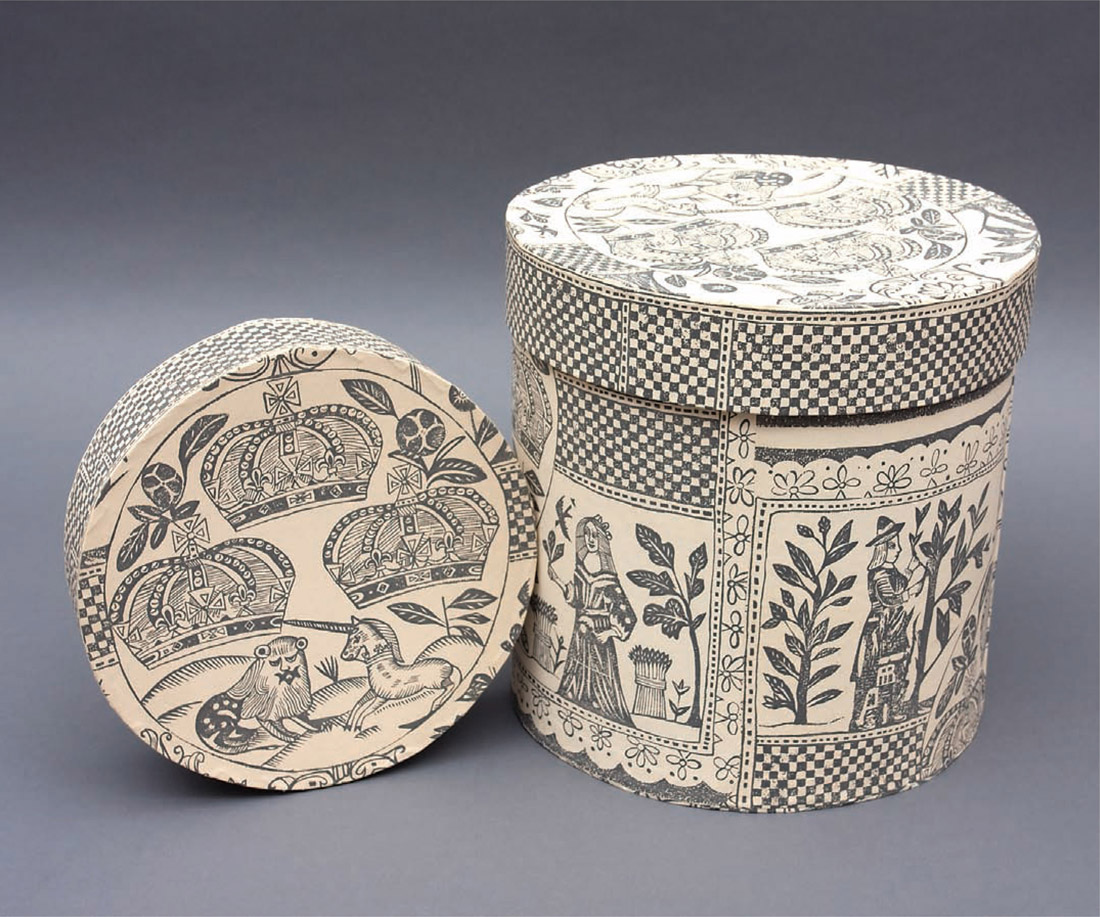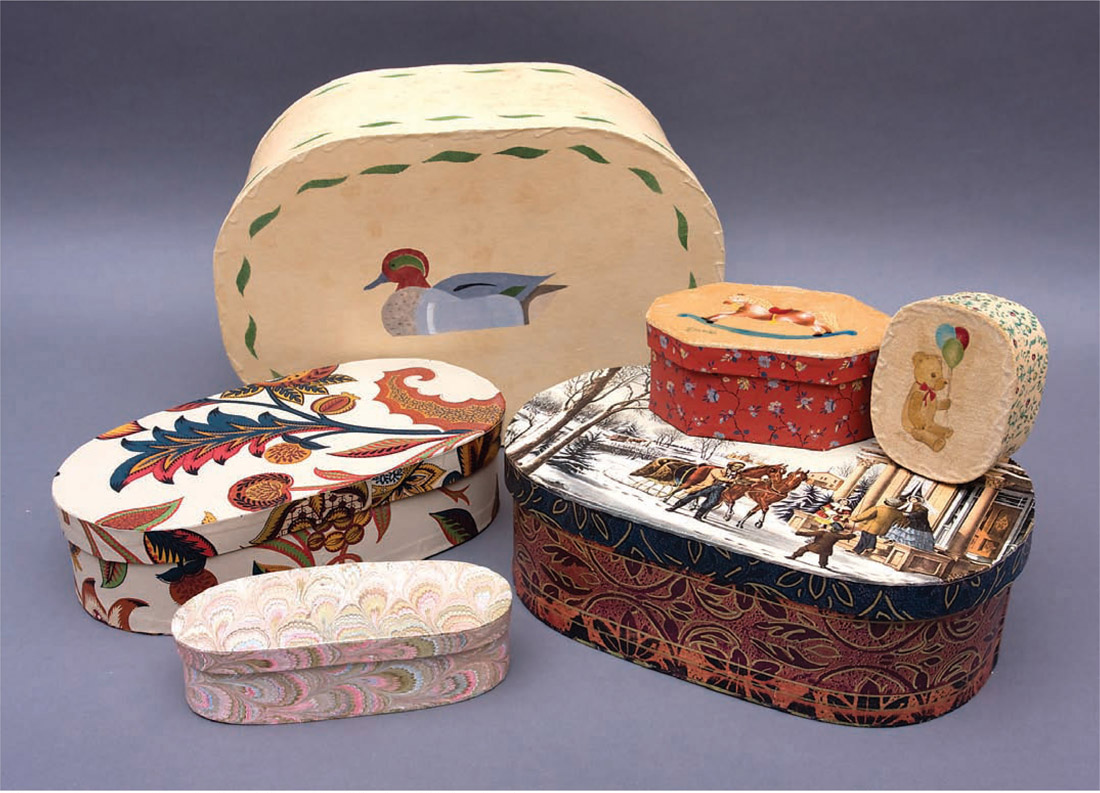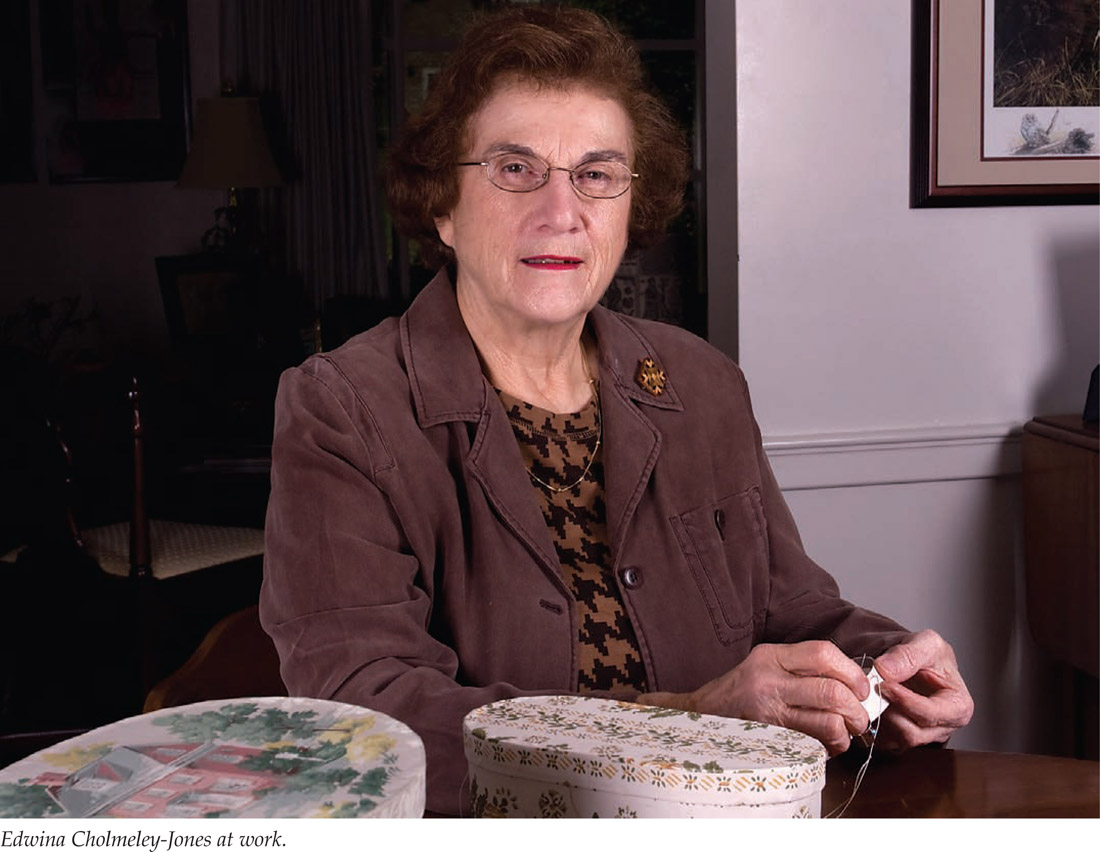HERITAGE CRAFTS TODAY
Bandboxes
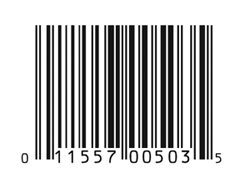
Copyright 2009 by Stackpole Books
Published by
STACKPOLE BOOKS
5067 Ritter Road
Mechanicsburg, PA 17055
www.stackpolebooks.com
All rights reserved, including the right to reproduce this book or portions thereof in any form or by any means, electronic or mechanical, including photocopying, recording, or by any information storage and retrieval system, without permission in writing from the publisher. All inquiries should be addressed to Stackpole Books.
Printed in China
10 9 8 7 6 5 4 3 2 1
FIRST EDITION
Cover design by Tracy Patterson
Frontispiece:
The wallpaper on this bandbox by Edwina Cholmeley-Jones is a reproduction bearing a portrait of Charles II and Catherine of Braganza from a 1662 fragment of a lining paper. The tree crowns represent England, Scotland, and Ireland. The figures are the four seasons. COLLECTION OF AMELIA DANGELI
Library of Congress Cataloging-in-Publication Data
Cholmeley-Jones, Edwina.
Bandboxes : tips, tools, and techniques for learning the craft / Edwina Cholmeley-Jones ; photography by Kevin Brett. 1st ed.
p. cm.
Includes bibliographical references.
ISBN-13: 978-0-8117-0503-5 (hardcover, concealed spiral binding)
ISBN-10: 0-8117-0503-X (hardcover, concealed spiral binding)
1. Woodwork. 2. Box making. 3. Bandboxes. I. Title.
TT200.C56 2009
684.08dc22
2009007269
ACKNOWLEDGMENTS
S pecial thanks to editor Kyle Weaver, for giving me the confidence and help to complete this book; my friend Linda Brubaker, for recommending me to Kyle; and photographer Kevin Brett, for his creative insight in displaying my work for the images in this book.
My appreciation goes to the following individuals and institutions for their assistance: Claire Giblin and Maureen Lane of the Phillips Museum of Art at Franklin and Marshall College; Louise Kulp of the Shadek-Fackenthal Library at Franklin and Marshall College; Nicole R. Wagner and Donna Horst of Landis Valley Museum; and Robert Good and Randy Weit of the Lititz Museum.
I am grateful to many friends and family for generously lending my bandboxes from their collections to be featured in the book: Amelia DAngeli, Gloria Angelozzi, Art and Jane Myers, Jane Lee, Linda Brubaker, Cathy Cholmeley-Jones, Dante Cholmeley-Jones, Dorothy Caven, and E. Carolyn Hazell.
I am indebted to my children for their encouragement and enthusiasm: Cathy, for her technical advice and preliminary editing; Montie III, for his creative and artistic ability in the process of developing the book; and Edward, for his admiration of my bandboxes and spurring me on with his wisdom, particularly his statement, Any endeavor, to be worthwhile, requires sacrifice and hard work.
Lastly, my thanks to my husband, Montie, for being supportive and indulgent.
INTRODUCTION
An assortment of bandboxes by Edwina Cholmeley-Jones.
M aking bandboxes is a wonderful and satisfying craft. Bandboxes are traditionally made of paste-board and sewn together with linen thread, and then covered with wallpaper and lined with newspaper. You can make bandboxes either by copying the shapes of antique examples or by designing your own boxes for specific items. Besides being decorative, bandboxes are very useful. They can be made in many different shapes and sizes to accommodate specific contents. The largest box I have made was for a pair of riding boots and the smallest was a bonnet box for a dollhouse.
My interest in history is what led me thirty years ago to take a class at the Landis Valley Museum in Lancaster, Pennsylvania, to learn how to reproduce nineteenth-century bandboxes. It was so enjoyable, and I was so intrigued by the unique quality and historic importance of bandboxes, that I was inspired to pursue the craft and pass it on.
During the course of my career, I have supplied bandboxes to many museum shops, including the Museum of American Folk Art, Winterthur, the Brandywine River Museum, the Moravian Book and Gift Shop, and the Landis Valley Museum. One of my favorite commissions was to reproduce bandboxes for the National Park Service to be used at Independence Hall in Philadelphia. I also designed a special box to display maps for the National Park Service rangers.
I have been honored to have my bandboxes featured in various publications, including American Country Christmas, McCalls Needlework and Crafts, House Beautiful, and the first issue of Womens World. For many years, I have demonstrated bandbox making at Landis Valley Museum, and I have been teaching classes on the craft for more than twenty years at the Institute of Pennsylvania Rural Life at Landis Valley.
In this book, I provide you with the necessary instructions, techniques, and inspiration for making your own bandboxes.
A Brief History of Bandboxes | 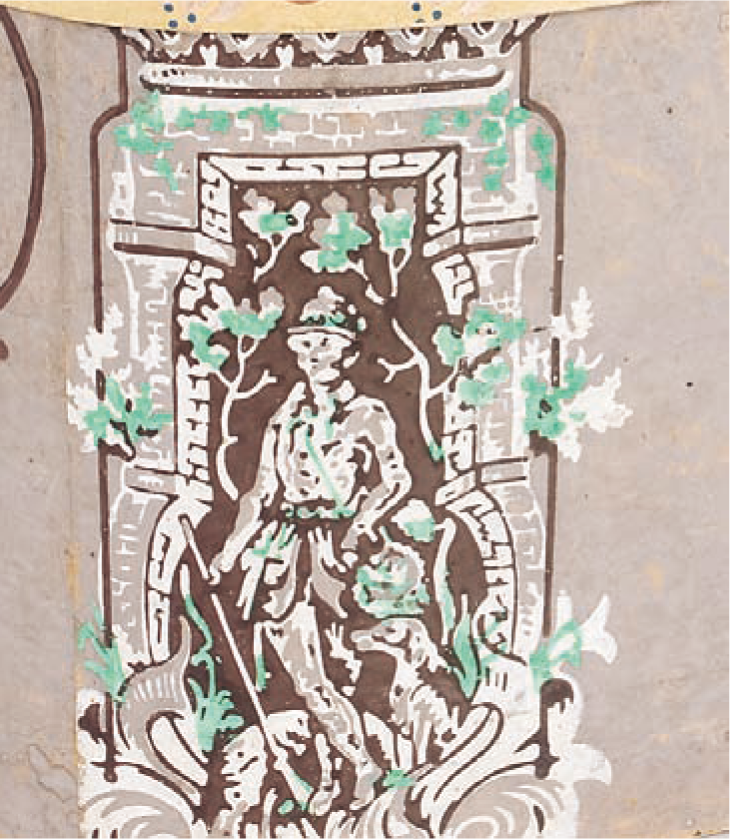 |
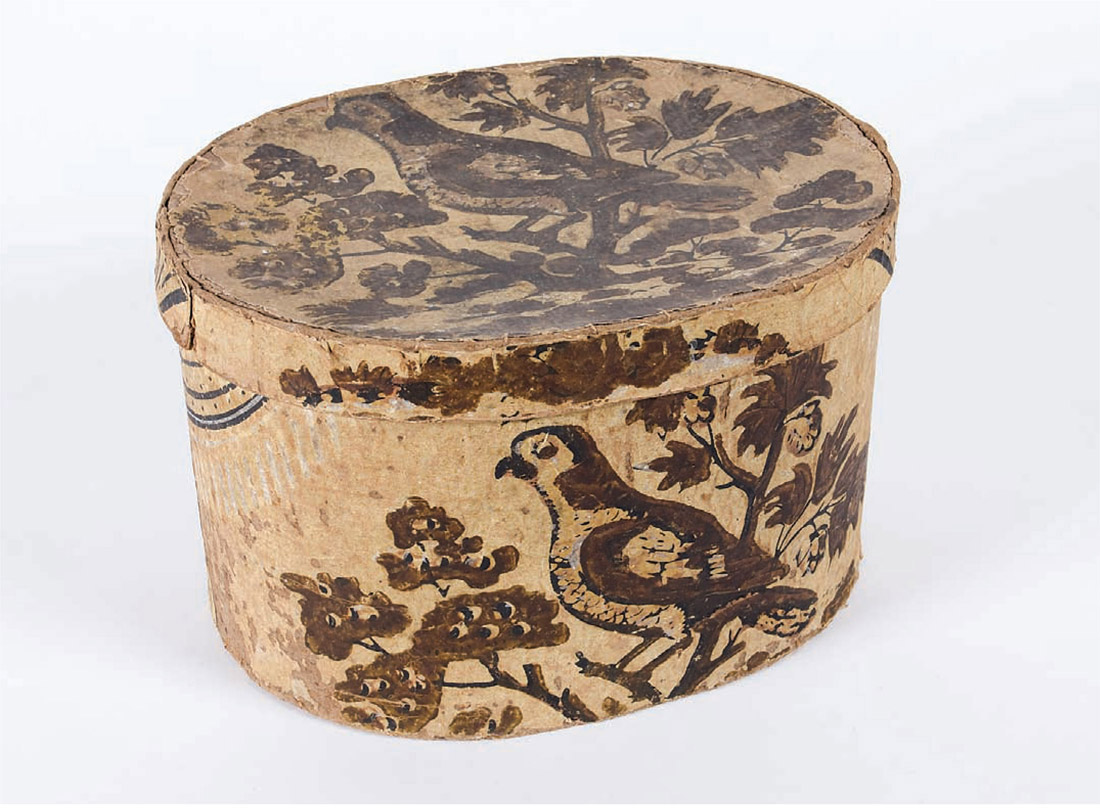
A bandbox covered by hand-block-printed wallpaper of a bird perched in a tree. LANDIS VALLEY MUSEUM, PENNSYLVANIA HISTORICAL AND MUSEUM COMMISSION
B andboxes originated in sixteenth-century England during the Elizabethan era, when it was fashionable for men and women to wear elaborate starched ruffs around their necks. These were stored in special boxes to keep them pristine. When the austere Puritan Oliver Cromwell came to power in 1653, he did away with this fashion. He wore a simple band with minimal lace and kept it in a box, originating the name bandbox. In America, most bandboxes were made between 1825 and 1850, although the earliest known wallpaper box was documented in the 1636 record of the estate of Sarah Dillington of Ipswich, Massachusetts.
The demand for boxes coincided with the industrialization of America. Previously, an ordinary family had few possessions, and a simple blanket chest was adequate storage for the whole family. With the advent of factories, however, more products became available. People were earning more money, enabling them to buy extra possessions, and they needed storage for them. Also during this period, new forms of transportation emerged. Steamboats, canals, and railroads made traveling easier and more affordable, causing an increased demand for luggage. Bandboxes helped fill this need.
There was such a demand for these wall-paper-covered cardboard or wooden boxes that both men and women could earn a living making them. A cottage industry developed, and wallpaper dealers sold the boxes. Individuals also made their own boxes at home to fill their particular needs. Many different sizes and shapes were made to accommodate myriad items, from thimbles and pins to gloves and bonnets to large celluloid hoop underskirts. The boxes were relatively inexpensive, with a large one costing fifty cents and a small one for as little as twelve cents.


